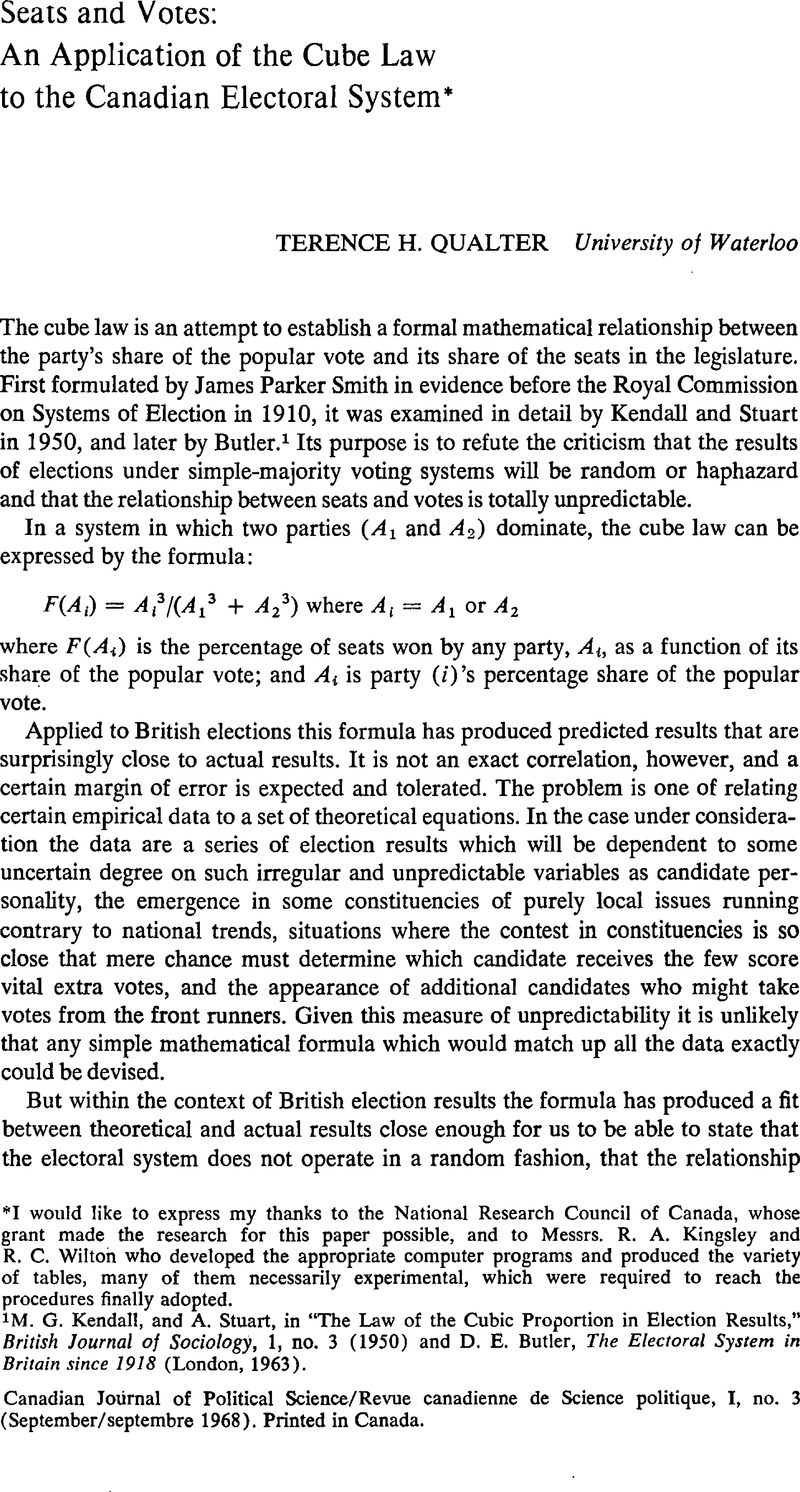Crossref Citations
This article has been cited by the following publications. This list is generated based on data provided by
Crossref.
Spafford, Duff
1970.
The Electoral System of Canada.
American Political Science Review,
Vol. 64,
Issue. 1,
p.
168.
Tufte, Edward R.
1973.
The Relationship between Seats and Votes in Two-Party Systems.
American Political Science Review,
Vol. 67,
Issue. 2,
p.
540.
Blais, Andre
Desrosiers, Rachel
and
Renaud, Francois
1974.
L'effet en amont de la carte électorale: le cas de la région de Québec à l'élection fédérale de 1968.
Canadian Journal of Political Science,
Vol. 7,
Issue. 4,
p.
648.
Robins, Robert S.
1979.
Votes, seats, and the critical Indian election of 1967.
The Journal of Commonwealth & Comparative Politics,
Vol. 17,
Issue. 3,
p.
247.
Whiteley, Paul
1979.
Electoral Forecasting from Poll Data: The British Case.
British Journal of Political Science,
Vol. 9,
Issue. 2,
p.
219.
Laakso, Markku
1979.
Should a Two-and-a-Half Law Replace the Cube Law in British Elections?.
British Journal of Political Science,
Vol. 9,
Issue. 3,
p.
355.
Upton, Graham
1985.
Blocks of Voters and the Cube ‘Law’.
British Journal of Political Science,
Vol. 15,
Issue. 3,
p.
388.
Curtice, John
and
Steed, Michael
1986.
Proportionality and exaggeration in the British electoral system.
Electoral Studies,
Vol. 5,
Issue. 3,
p.
209.
Taagepera, Rein
1986.
Reformulating the Cube Law for Proportional Representation Elections.
American Political Science Review,
Vol. 80,
Issue. 2,
p.
489.
Mughan, Anthony
1987.
General election forecasting in Britain: A comparison of three simple models.
Electoral Studies,
Vol. 6,
Issue. 3,
p.
195.
Ansolabehere, Stephen
and
King, Gary
1990.
Measuring the Consequences of Delegate Selection Rules in Presidential Nominations.
The Journal of Politics,
Vol. 52,
Issue. 2,
p.
609.
Gryski, Gerard S.
Reed, Bruce
and
Elliott, Euel
1990.
The Votes-Seats Relationship in State Legislative Elections.
American Politics Quarterly,
Vol. 18,
Issue. 2,
p.
141.
Whiteley, Paul F.
2005.
Forecasting Seats from Votes in British General Elections.
The British Journal of Politics and International Relations,
Vol. 7,
Issue. 2,
p.
165.
Ergun, Selim Jürgen
2010.
From plurality rule to proportional representation.
Economics of Governance,
Vol. 11,
Issue. 4,
p.
373.
Piolatto, Amedeo
2011.
Plurality versus proportional electoral rule: Which is most representative of voters?.
European Journal of Political Economy,
Vol. 27,
Issue. 2,
p.
311.
Franch, Fabio
2013.
(Wisdom of the Crowds)2: 2010 UK Election Prediction with Social Media.
Journal of Information Technology & Politics,
Vol. 10,
Issue. 1,
p.
57.
Barton, Jeffrey
2021.
Inequity and Seat Lean in the Detection of Partisan Gerrymanders.
SSRN Electronic Journal ,
Barton, Jeffrey T.
2022.
Fairness in plurality systems with implications for detecting partisan gerrymandering.
Mathematical Social Sciences,
Vol. 117,
Issue. ,
p.
69.
